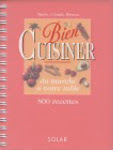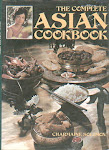"Keep me as the apple of your eye;
hide me in the shadow of your wings."
Psalm 17:8

 I've been making applesauce each year for I don't know how long. Where I live there are plenty of apples every fall. Just about any kind you could want. I always mix apples for my applesauce because they each have their own quality. Now some apples I never use, like red or yellow delicious, or Rome apples. It's not that I have anything against them, they just seem more like eating apples than cooking apples. I have an absolute passion for a good yellow delicious with cheese, and they make a nice tart tatin also. But anyway, I always include either gravenstiens, or newtons, or granny smiths. The rest that I include are usually very red, because those add sweetness and color.
I've been making applesauce each year for I don't know how long. Where I live there are plenty of apples every fall. Just about any kind you could want. I always mix apples for my applesauce because they each have their own quality. Now some apples I never use, like red or yellow delicious, or Rome apples. It's not that I have anything against them, they just seem more like eating apples than cooking apples. I have an absolute passion for a good yellow delicious with cheese, and they make a nice tart tatin also. But anyway, I always include either gravenstiens, or newtons, or granny smiths. The rest that I include are usually very red, because those add sweetness and color. Obviously one doesn't need a real recipe for making applesauce, and it's all about taste. But for what it's worth here's the ratio I used.
Obviously one doesn't need a real recipe for making applesauce, and it's all about taste. But for what it's worth here's the ratio I used.25 pounds of apples, about 5 pounds each of 5 different kinds, some green, some red
2-3 cups of white sugar, you can use brown sugar if you like
1 tablespoon cinnamon, whatever kind you have
5 cups of good natural apple cider
equipment needed:
good paring knife
a large bowl, I use a McCoy bowl

two large pots with lids and a heavy bottom, like a brazier or a rondeau - if you use a pot with a thin bottom you will likely burn some apples
a smaller sturdy bowl for setting the food mill over, I use a smaller McCoy with a spout and a handle

a large roasting oven - they've been making the same thing for decades, mine holds 20 quarts and I can use it just like any oven.

20 pint size jars, preferably wide mouth, with matching rings and lids

clean tea towels for wiping off the rings and lids and jar rims, and for setting the jars on
a large ladle for scooping the hot applesauce into the jars
a large pot with water to put on the stove with the lids and rings in it to sterilize them
a canning funnel

a canning pot, filled with water

a jar lifter - essential for getting the jars out of the boiling water

twongs or a magnetic stick for getting the lids and rings out of the boiling water


Now you must admit that's an awful lot of things, just to can up some applesauce. But that's the way it is.
Day One:
The first thing to do is get the apples all cooked up.
Fill the sink with cold water and put in a load of apples.

Taking the paring knife and the apples one at a time, quarter the apple, and for each quarter remove the stemy bits and the seeds, and cut it in half the long ways. So what you have is that each apple is cut into eight wedges. When you've got that batch cut and trimmed, put into a big pot, add a cup of apple cider, put on the lid and cook on medium to low heat until the apples are all nice a mushy. While the first batch is cooking, cut and trim the next patch. If the first batch is done cooking (check every so often) before you are ready to cook the second batch, just turn the heat off and leave for a bit.

Then, when you have the second batch cooking, start to process the first cooked batch in the food mill. Place the food mill over the smaller McCoy bowl, then fill the mill with mooshed apples and grind away, putting the applesauce into the roasting oven when the bowl fills. When you are done mooshing the whole batch, clean the food mill so it's ready for the next batch.


Notice the different colors of sauce from the different apples?
At this point I turn off the roaster, put on the lid, and leave over night. This is because I am a bit weary and need a break. The applesauce will be just fine like this. Just don't leave it for days.
Next Day:
Heat the applesauce back up to a nice heat, but be careful not to over cook and scorch the applesauce. At the same time, put all the jars and rings into the dishwasher and run it. Then, when the sauce is nice and hot, and the jars are washed, prepare to put the sauce in jars and can it.
First, it's good to tie some twine onto the jar holder handles in the canner. This is so you can lift it out of the water without a major disaster. Get the canner about 2/3rds full of water and place on the stove and bring to a boil.
Put the jar lids and rings in a large pot (large enough to hold the rings and lids), cover with water and heat up on the stove to sterilize. Leave them in the water and just pull out as needed, so they stay sterilized.
Then set a folded in half tea towel near the roaster, place the jars on the tea towel. Get the funnel and set on to a jar. Using the big ladle, scoop applesauce into the jar. Now hopefully your applesauce is nice and hot, so don't hold on to the jar, as it will heat right up. When the applesauce is to a 1/2 to a 1/4 inch from the top, remove the funnel and carefully place it on the next empty jar. The reason for carefulness is so that you don't get applesauce on the rim of the jar. This is why the wide mouth jars, they're easier to avoid hitting the rim (as well as easier for kids to scoop out applesauce later). Then take the clean tea towel, dip the tip of the edge into the very hot water, then touch the wet edge to a dry spot to make sure it's not dripping, and then use this hot wet edge to wipe around the edge of the filled jar to make sure that there is nothing on it. Then remove a lid from the water, carefully dry it off, and place on the filled jar. Next, remove a ring from the water, carefully dry it off, and screw onto the jar, and make sure it's on tight. This is tricky, as the jar is hot. Move onto the next jar, until all the jars are filled, or all the applesauce is canned up.
Then, when the water in the big canning pot is very very hot, and you have at least seven jars done, put the jars into the canner, lower them into the water. Make sure that the "not too long"
pieces of twine tied to the handles on the jar holding rack are sticking out of the pot. If there is not enough water to cover the jars, add water to about 1 inch above the jars. Bring to a boil, cover, and boil the jars for 12 to 15 minutes. The point is to get everything in the jars very very hot. When the time is up, using the twine, firmly grabbed onto, lift up the jars. Using the jar holder, remove the jars to a tea towel. Leave them there until they are cool.
Now the final thing is to be sure that the jars are sealed. The lids will make a click sound when they shrink into place. This can take a while, as it happens as the jars cool a bit. But the ultimate test to see that the lids have sunk down is to you tap your finger on the top of the jar. It should make a dull thud sound, and there is no movement of the lid.
There you have it - a whole years supply of applesauce.
My husband wants me to tell you that the applesauce warm on ice cream is very delicious. We also just eat it, or put it on toast, or pancakes, or French toast, or waffles, or crepes, or yogurt, or pork chops, or sausages, or ..... bon appétit.
p.s. At the rate my family is eating up the applesauce I think maybe it's maybe 9 months supply of applesauce, and I actually ended up canning 60 pounds of apples.

"Good apple pies are a considerable part of our domestic happiness."
Jane Austen
















